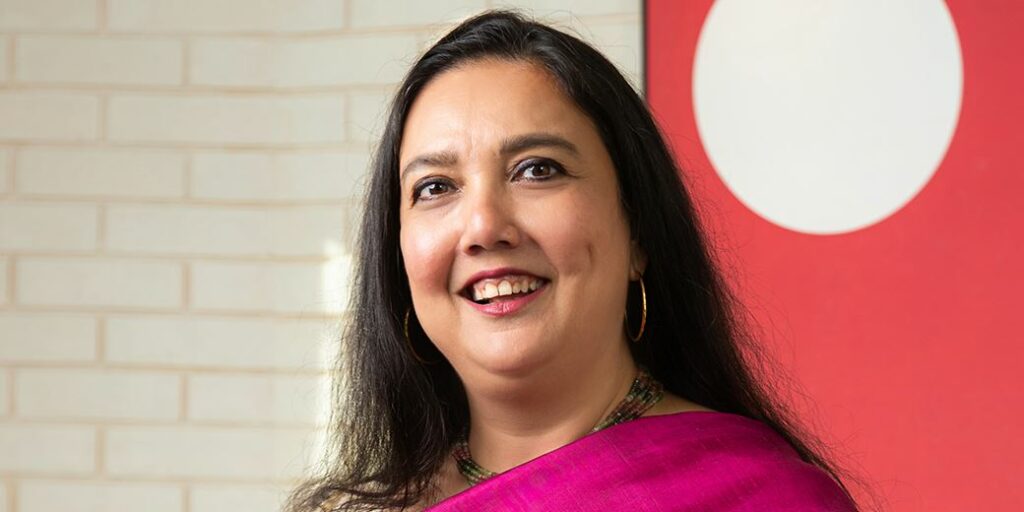This article was originally featured on Citywire Asia here.
Investment advisors are being asked to come up with a pipeline of investments that creates a net positive social impact, says AVPN’s Naina Subberwal Batra.
Family offices in Asia are increasingly turning their attention to impact investing to catalyse change, and not just involving themselves in philanthropy.
‘Wealth has grown enormously in this part of the world, leading wealth holders to engage in social investing, apart from their philanthropy,’ said Naina Subberwal Batra (pictured), chief executive officer, Asian Venture Philanthropy Network (AVPN).
There currently are institutional scale, high financial return impact funds such as Leapfrog or TPG’s Rise Fund at one end of the impact spectrum, said Chris Addy, Southeast Asia head of the Bridgespan Group, and some family offices on the other end. The latter will make a set of investments where they expect a return of capital or even some modest gains, but the focus is on the impact they can create with their investment.
However, increasingly, ‘we are finding family offices pushing their investment advisers to come up with a pipeline of investments that creates a net positive social impact’, Batra told Citywire Asia in an interview.
This was evident in the recent Asia Impact First fund launched by DBS and Heritas Capital that raised $20m. While the Singapore bank was the anchor investor with a $10m commitment, others such as Tsao Family Office, ANF Family Office, Ishk Tolaram Foundation and the IMC Group joined in.
According to Albert and Alvin Li of ANF Family Office: ‘Through our experience in impact investment over the years, we have interacted with many social entrepreneurs, and recognise their need for more patient catalytic capital to achieve their full potential. This is where we see impact-first investing coming in.’
Batra said that AVPN had partnered with both family offices and private banks, who had been looking at finding opportunities for social investment that extended beyond Singapore’s borders.
‘It is a welcome change that they are becoming more innovative and entrepreneurial,’ she said, citing the example of North-East Family Office, a Singapore-based multi-family office, which has invested in the Circulate Capital Ocean fund, which has holdings in companies across plastic recycling, waste management and so on.
Impact investing vs philanthropy
With growing interest in impact investment, it is no surprise that the charity sector is worried about its own source of funding.
‘In our experience, the philanthropic budget remains the same. It may not increase, if they have put in a new sum for impact investing, but it doesn’t usually go down either,’ she explained.
Batra pointed out that families did not give more than 5% of their wallet to philanthropy and that percentage was set to stay. ‘If they look at the other 95% through an impact lens, then the trend is actually a positive one,’ she added.
Batra is of the view that wealthy families are far more conservative in their philanthropy than they have been in their business and may be willing to take some risk by making social investments.
Divya Patel, chief operating officer of the Ishk Tolaram Foundation (the charity arm of the Tolaram group), told Citywire Asia that she did not see impact investing taking away money from philanthropic giving. In fact, investments in impact funds could be an opportunity to use the return on investment to recycle proceeds into further impact projects.
‘We’re looking at the ability to recycle capital. Philanthropy and pure grant-making also has a role, but Impact First gives us the opportunity to get our capital back and recycle it into future impact projects,’ she added.
Several surveys have revealed that the younger generation of wealthy are more interested in impact investing. They are also willing to take a discounted financial return on such investments.
For Addy, the connection between impact investments and philanthropy could be seamless. ‘We have seen clients get engaged in philanthropy and then in the process come across high-impact investments as well… and for families doing impact investing to notice there are limits to what they can achieve through investing, so they begin to do more philanthropy.’
The key, he said, was to know that there were lots of tools out there to create an impact in the world and they each had strengths and limitations. ‘Figuring out the right financial tool for a given situation is a challenge and opportunity that family offices uniquely have,’ he concluded.

















